- High-growth technology stocks have struggled due to rate hikes
- Reset in valuations has created bargain-buying opportunities
- Consider buying the dip in Pinterest, Fortinet, and DraftKings ahead of earnings
High-growth technology stocks were some of the market’s best performers over the last few years before the recent selloff dragged down the NASDAQ 100.
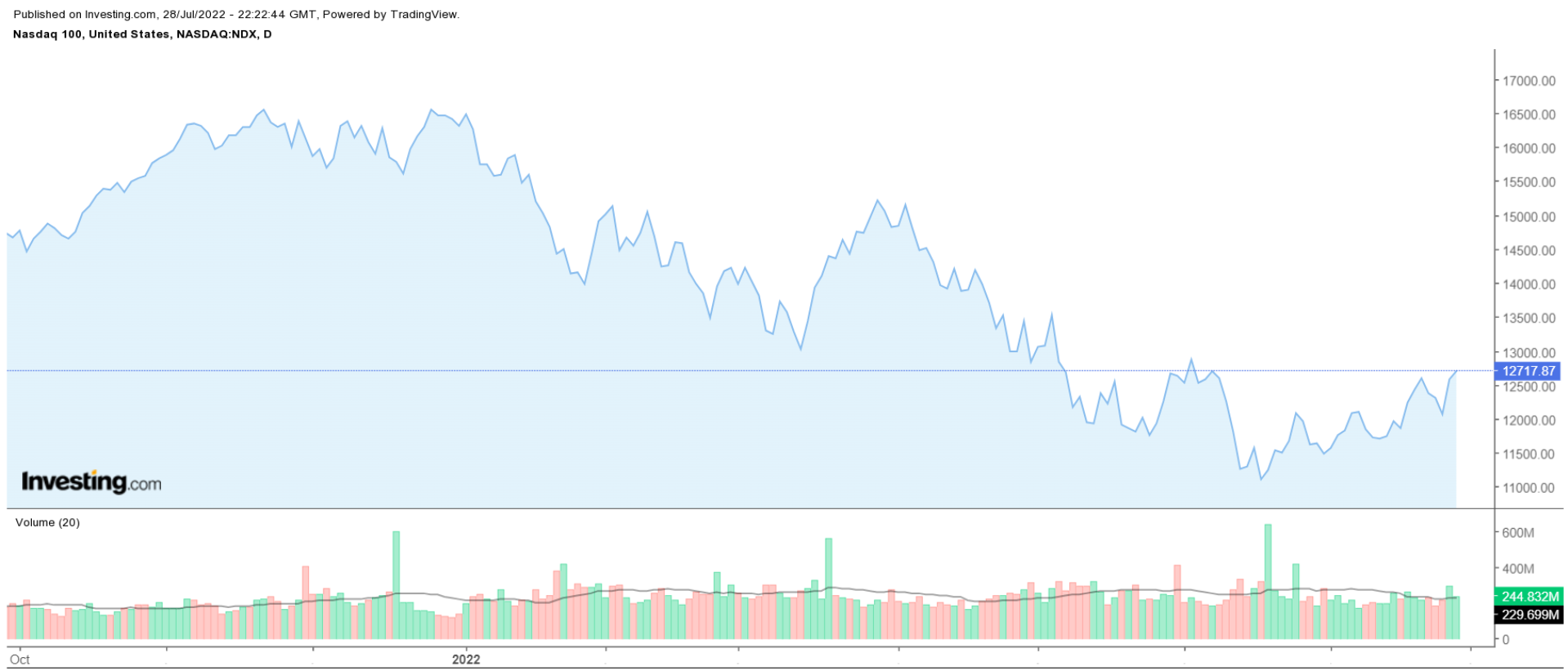
The steep year-to-date (ytd) declines, largely a result of the US Federal Reserve’s monetary tightening measures aimed at combating the highest inflation in decades, have created bargain-buying opportunities.
Here are three stocks which are reporting next week and have plenty of room to grow their respective businesses thus making them solid long-term investments.
- Earnings Date: Monday, August 1 after the close
- Year-To-Date Performance: -46.9%
- Market Cap: $12.8 billion
Pinterest (NYSE:PINS), which operates an image-sharing social media platform, has seen its valuation crumble in the last several months.
After soaring to an all-time high of $89.90 in February 2021, PINS stock is down 46.9% year-to-date and is 75% off its record peak.
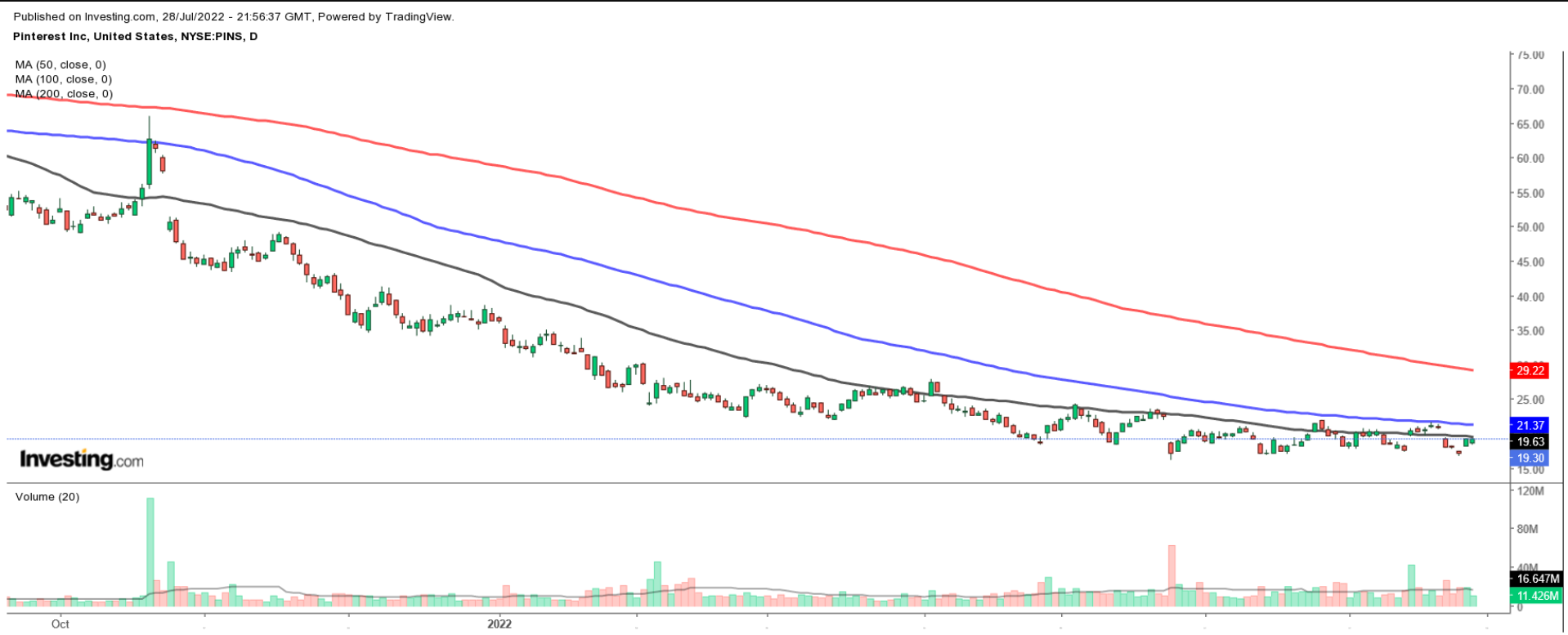
Pinterest has either beaten or matched Wall Street estimates for eight consecutive quarters, dating back to Q1 2020. Consensus Q2 estimates call for revenue to increase 8.1% year-over-year (yoy) to $663.2 million, thanks to positive returns from its ongoing international expansion. But EPS is forecast to slide 28% yoy to $0.18.
Investors will be watching global monthly active users (MAUs) updates as the figure declined 9% yoy to 433 million in the last quarter, slightly missing expectations.
In addition, any comments from Pinterest’s management regarding sales guidance and user growth for the rest of the year amid the challenging macroeconomic and geopolitical environment will be noted.
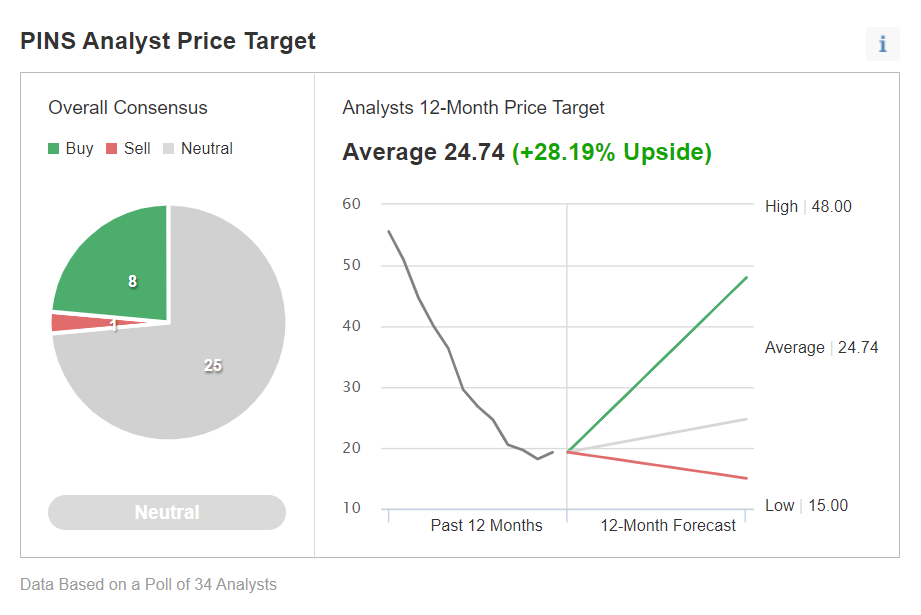
Despite worries over decreasing user metrics and a slowdown in digital ad spending, 33 out of 34 analysts surveyed by Investing.com rate Pinterest’s stock either as ‘outperform’ or ‘hold’. The average price target is around $25, representing an upside of nearly 28%.
Similarly, the quantitative models in InvestingPro point to a gain of 34.8% bringing shares closer to their fair value of $25.81.
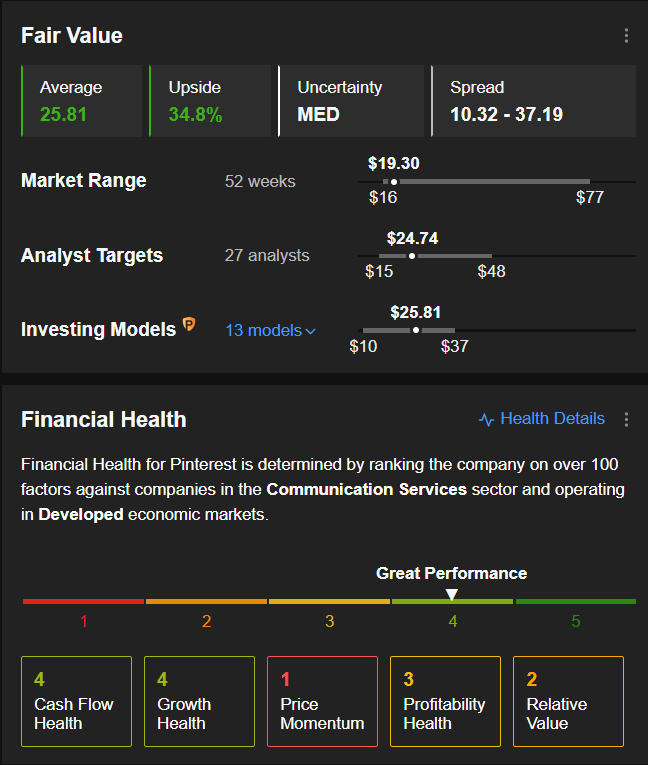
Fortinet
- Earnings Date: Wednesday, August 3 after the close
- Year-To-Date Performance: -17.4%
- Market Cap: $47.6 billion
Fortinet (NASDAQ:FTNT) develops and sells cybersecurity solutions, such as intrusion prevention systems and endpoint security components. Year-to-date, shares of the network-security firm have lost 17.4% as investors flee high-growth tech names with rich valuations.
FTNT stock—which just recently split 5-for-1—is trading about 20% away from its all-time high of $74.35 on Dec. 29, 2021.
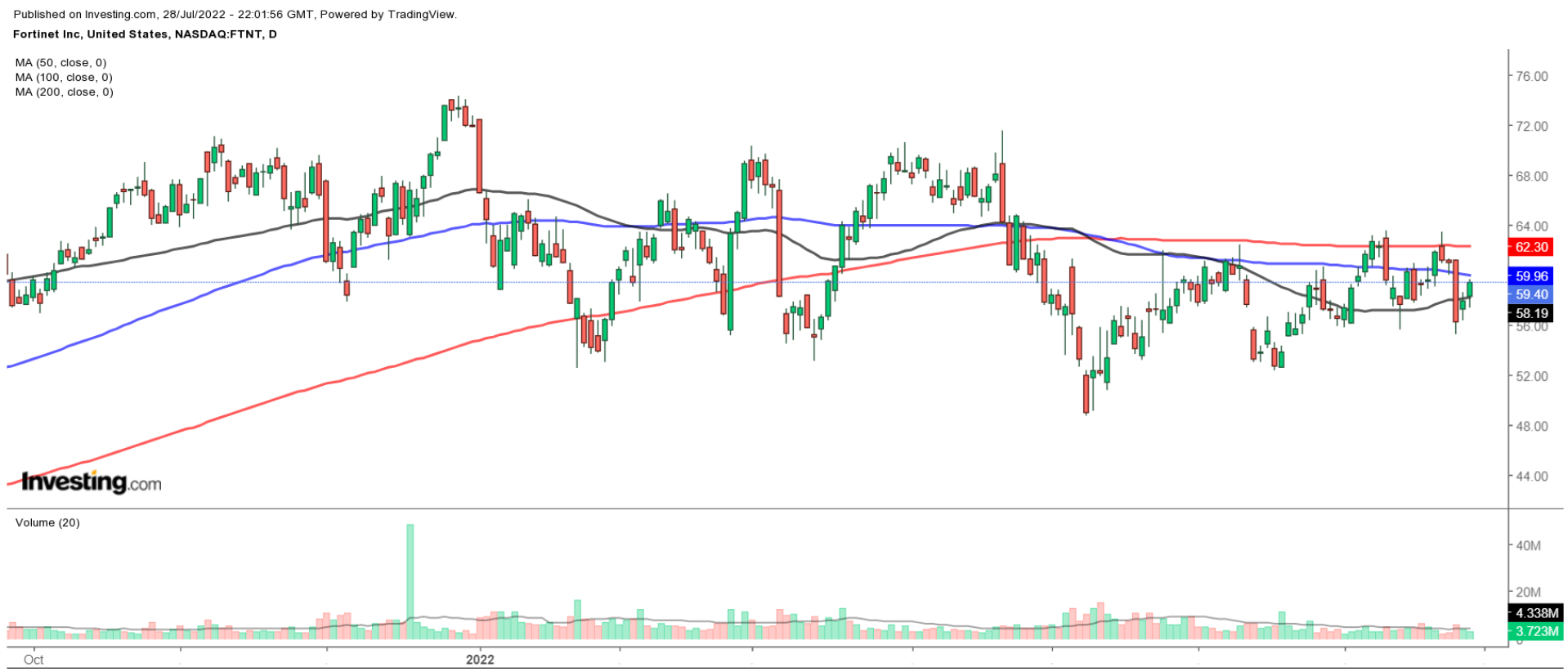
Fortinet far exceeded Wall Street estimates in the previous quarter and gave strong guidance. It has also topped Wall Street’s profit and sales expectations for 17 straight quarters, dating back to Q4 2017.
Consensus estimates call for yoy revenue growth of 28.6% thanks to an expected boost in sales of its networking and cybersecurity tools. If confirmed, that would mark the highest quarterly sales total in the cybersecurity company's history. EPS is forecast to improve 15.8% yoy to $0.22.
The information-security firm’s calculated billings—which refers to revenue plus deferred revenue acquired over the quarter—will also be eyed after totaling more than $1 billion for the fourth quarter in a row. The key sales growth metric surged 36% yoy to $1.16 billion in Q1.
Investors will focus on Fortinet’s financial projections as it continues to benefit from robust demand for its cloud-based security solutions from large enterprises.
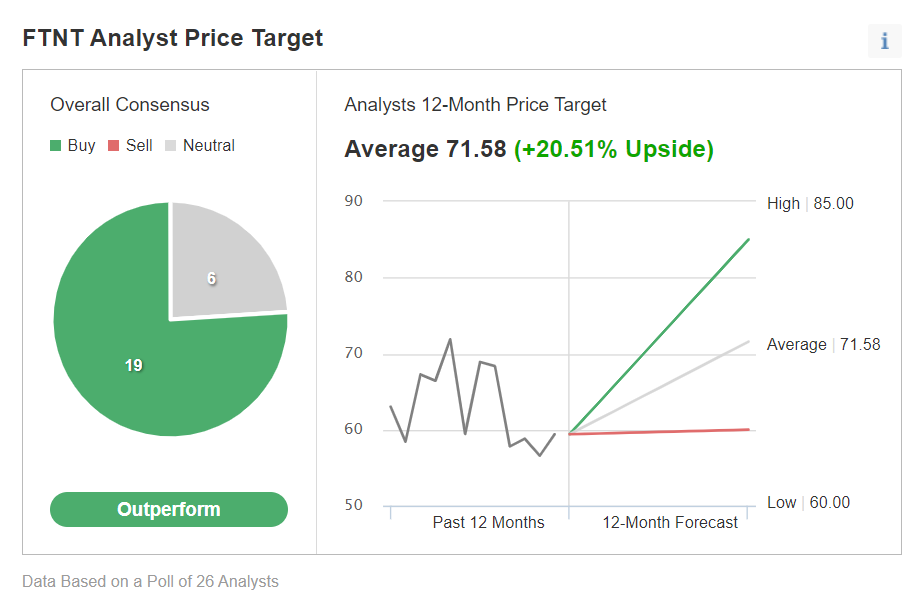
Per an Investing.com survey, the consensus recommendation is ‘outperform’ with fairly high conviction. And the average target price of $71.58 gives FTNT implied upside of 20.5%.
Likewise, the average fair value price for FTNT shares on InvestingPro stands at $62.36, a potential 5% upside from the current market value over the next 12 months.
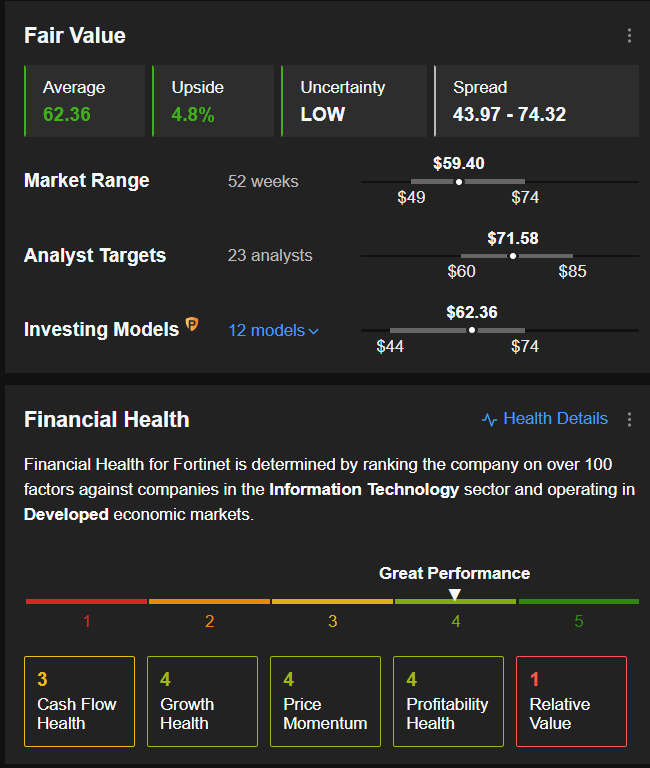
DraftKings
- Earnings Date: Friday, August 5 before the market opens
- Year-To-Date Performance: -50.1%
- Market Cap: $5.7 billion
DraftKings (NASDAQ:DKNG), which is widely considered as the leader in the online sports gambling industry, has fallen out of favor with investors this year amid a broad selloff in tech stocks, especially those that are unprofitable or have lofty price-to-earnings (P/E) ratios.
Shares of the online gambling specialist recently plunged to their lowest level since going public in April 2020 and are nearly 78% below their all-time high as well as 50% lower year-to-date.
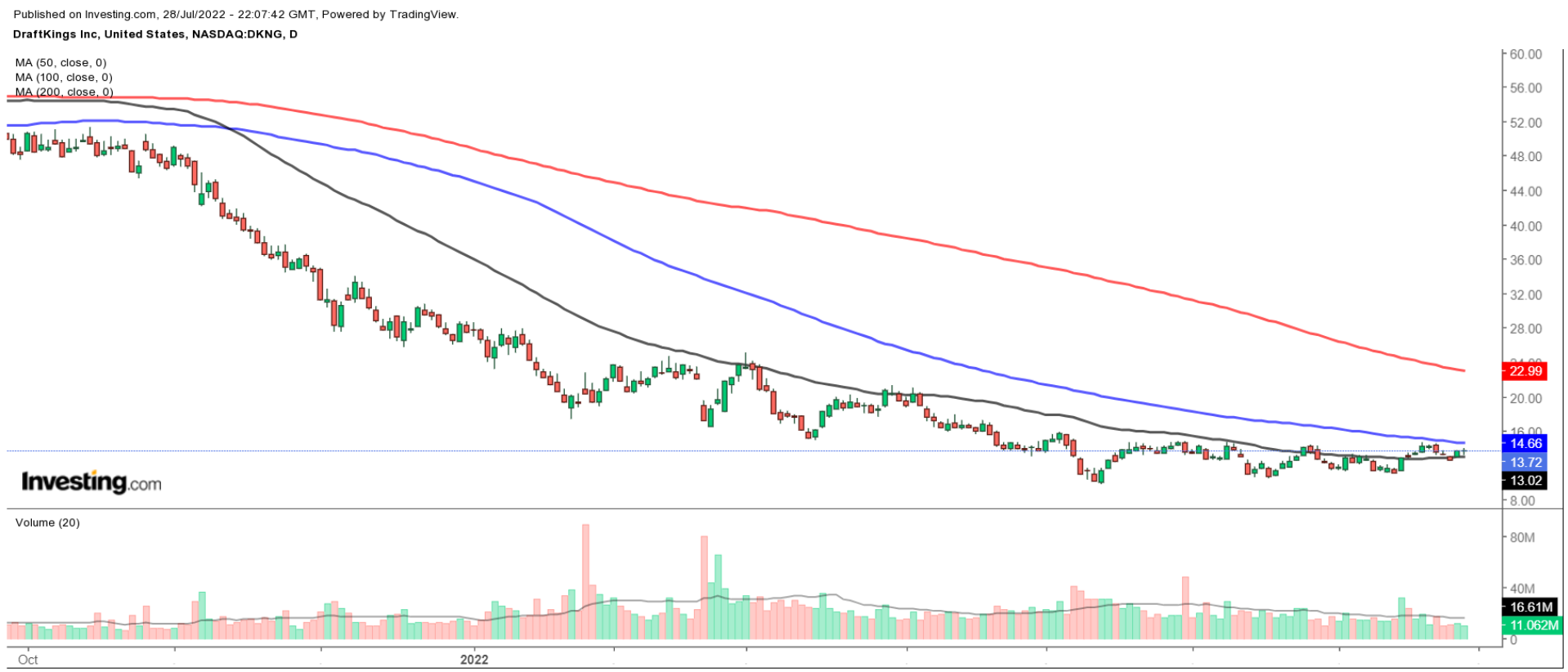
DraftKings reported a bigger loss than expected in the last quarter but provided an upbeat outlook. It has topped Wall Street’s profit expectations in nine out of the ten quarters since making its trading debut in Q1 2020.
Consensus calls for a loss of $0.69 per share for Q2, down from a loss of $0.76 per share a year ago. Revenue is forecast to climb 46.7% yoy to $436.7 million, as Americans flocked to its sports-betting platform after more states legalized online sports gambling.
As such, investors will focus on the sports betting firm’s monthly unique payers (MUPs) to get a better indication of how well its key business performed. The important metric increased 29% in Q1 to 2 million, while average revenue per MUP rose 11% to $67.
Market participants will also scrutinize DraftKing’s outlook for the rest of 2022 to hear whether it is feeling any impact on demand due to higher inflation.
Despite near-term headwinds, most analysts remain generally bullish on DraftKing’s stock, as per an Investing.com survey, which revealed that all 30 analysts covering the name rated it as either ‘buy’ or ‘hold.’
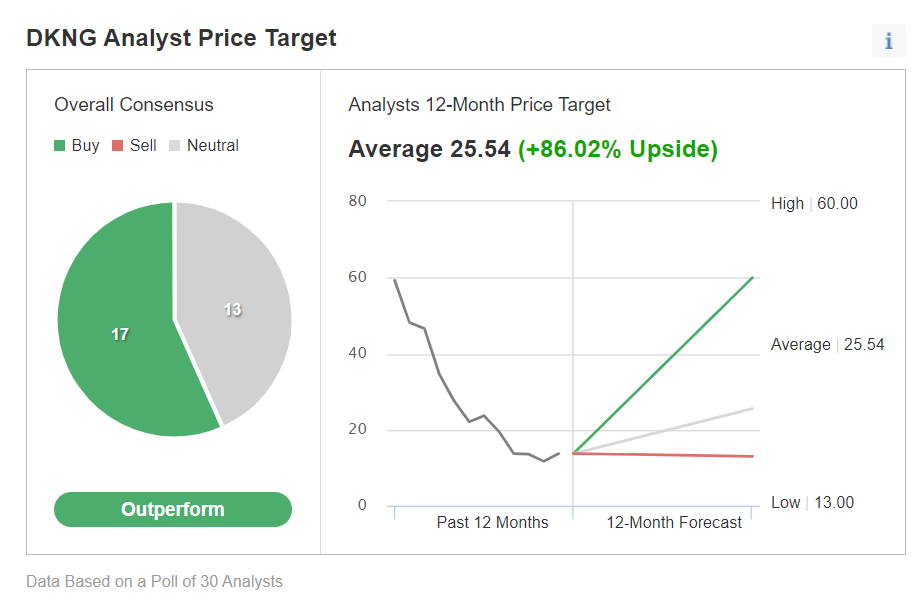
The stock has a whopping 86% upside potential with an average 12-month price target of $25.54.
Additionally, the average fair value for DraftKing’s stock on InvestingPro stands at $16.66, a potential 21% upside from the current market value.
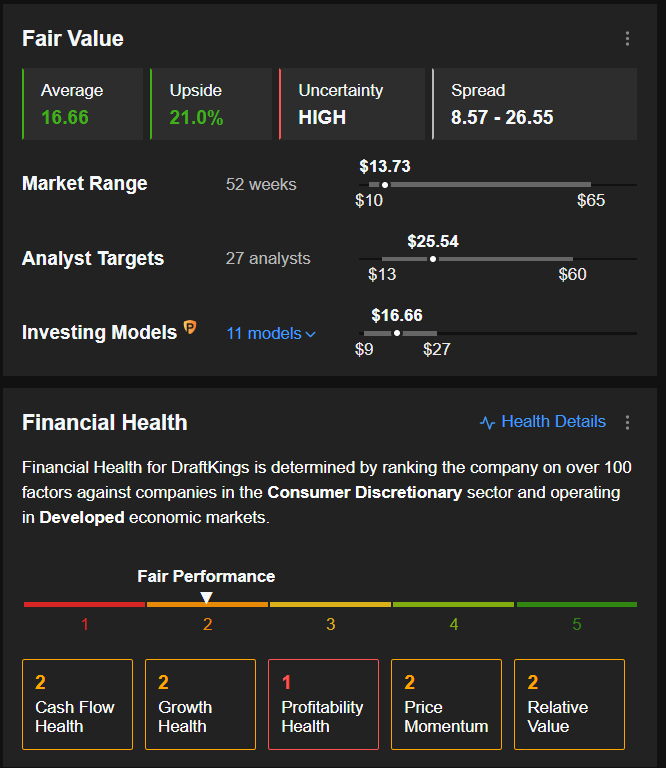
Disclaimer: At the time of writing, Jesse had a position in FTNT shares. The views discussed in this article are solely the opinion of the author and should not be taken as investment advice.
